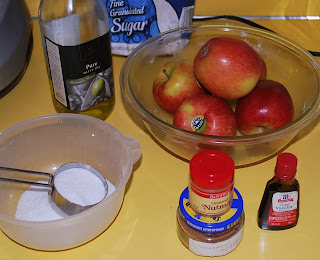 This year I decided to try growing potatoes in a container. Potatoes seem like a cheap, readily available commodity, so it may seem like a waste to grow some in a container. I was prompted by several thoughts.
This year I decided to try growing potatoes in a container. Potatoes seem like a cheap, readily available commodity, so it may seem like a waste to grow some in a container. I was prompted by several thoughts. First, I read that they grow very well in containers, providing a high yield in a small space. 2nd, I can grow varieties that are not easily found in the store.
First, I read that they grow very well in containers, providing a high yield in a small space. 2nd, I can grow varieties that are not easily found in the store. 3rd, based on my prior experience, fresh, home grown new potatoes taste very good - another item that seems better than store bought.
3rd, based on my prior experience, fresh, home grown new potatoes taste very good - another item that seems better than store bought. These are a white potato, the seed potatoes are labeled simply "Gourmet White". I grew a few 2 years ago, they were very good, but growing in the ground we missed most of them until they resprouted again. I also bought some organic "Russian fingerling" and will try those.
These are a white potato, the seed potatoes are labeled simply "Gourmet White". I grew a few 2 years ago, they were very good, but growing in the ground we missed most of them until they resprouted again. I also bought some organic "Russian fingerling" and will try those.The method is:
1. Start with a container with about 1 ft of potting mix on the bottom. Lay in the sets. I haven't learned whether it's better to cut the sets into individual eyes, or plant the entire set. Both have been advised. Cornell advises cutting larger ones, and planting smaller ones whole. I decided to plant the entire set, reasoning that ther emay be less risk of rot. With multiple eyes, they may be more crowded, but in a container that may not matter. In addition, Cornell advises: "If you want fast emergence, keep the bag of cut potatoes at room temperature until sprouts appear. Some varieties are slow to break dormancy and benefit from a 2- to 4-week “pre-warming” before planting. Others sprout in just a few days. Plant about 2 to 4 weeks before your last frost date. The soil temperature should be at least 40 F. Do not plant where you've grown potatoes, tomatoes, peppers or eggplant in the past 2 years." It's so warm outside, I'm taking the chance and planting out side.
2. You can presprout the potatoes or grow in the soil. I'm not sure which is better. The gourmet white were already sprouting in the store, so it's decided. The Russian Fingerling are not sprouted, but if truly organic would not be treated with chemicals to prevent sprouting. I planted them directly. I also have a few in a windowsill to see if they sprout.
3. The potato sets are laid in the potting soil and covered with a few inches of potting soil. When the plants reach about 6 inches tall, a few more inches of potting soil are added, covering the lower leaves of the plants. This process is repeated until the soil is near the the top of the container, and can be further mounded.
4. According to containergardening.com, you can dig around in the soil with your hands,and pull off potatoes that seem big enough to eat, and each plant should produce about 2 to 4 pounds of potatoes. That's not bad for a container.
Some gardeners use containers that grow as the potatoes grow, or juse plastic garbage pails. I opted for a container that grew a Brugmansia last year, but had left outside so froze and died.
I may plant some sets in the garden as well. I have some left over.
Vegetablegardening.com suggests growing them in a cardboard box or bushel basket. This container was about the size of a bushel basket, maybe a bit larger. Some growers even grow them in a bag of potting soil.
A grower with a nice accent growing potatoes in compost bags:

















